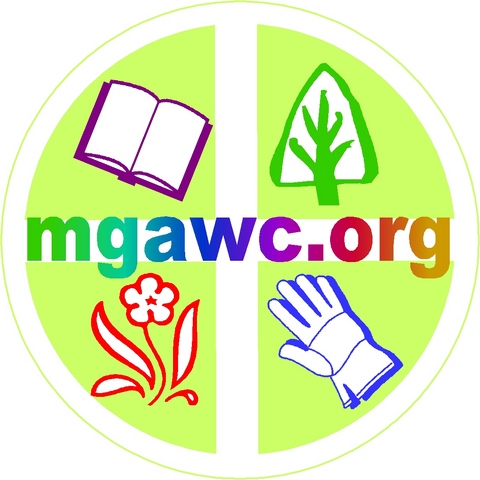In process of formatting links
CLIMATE & WEATHER
USDA Midwest Climate Hub: https://www.climatehubs.usda.gov/hubs/midwest
Drought Portal: https://www.drought.gov/
Enviroweather: https://enviroweather.msu.edu/
Frost Dates: https://mrcc.illinois.edu/VIP/frz_maps/freeze_maps.html#frzMaps
Plant Heat Zone Map: http://solanomg.ucanr.edu/files/245158.pdf
Koppen Climate Classification System: https://www.thesustainabilitycouncil.org/resources/thekoppen-climate-classification-system/
American Rose Trials for Sustainability: https://www.americanrosetrialsforsustainability.org/
Perennial Plant Association Plant of the Year Walters Gardens: https://www.waltersgardens.com/photo_essay.php?ID=95
All American Selections: https://allamericaselections.org/
MSU Horticulture Trial Gardens:
Vineland Hardy Roses: http://www.49throses.com/
Boxwood Blight: https://www.canr.msu.edu/news/preventing-the-spread-of-boxwood-blight-inlandscapes
Resistant Varieties: https://plantpathology.ces.ncsu.edu/wpcontent/uploads/2013/05/final-Cult-trials-summary-2013.pdf?fwd=no
Crackling boxwoods: https://bygl.osu.edu/index.php/node/1499
Boxwood Blight Insight Group: https://www.boxwoodhealth.org/
Boxwood cultivars ranked by resistance to boxwood blight: https://meridian.allenpress.com/jeh/article/38/2/50/436815/Ranking-Resistance-of-BuxusCultivars-to-Boxwood
Box Tree Moth: https://www.firstdetector.org/sites/firstdetector.org/files/EmergingThreats_BoxTreeMoth.pdf
Bushel and Berry: https://www.bushelandberry.com/
Oak Wilt:
Beech Leaf Disease:
https://www.sciencemag.org/news/2019/11/mysterious-disease-strikingamerican-beech-trees
https://www.dontmovefirewood.org/pest_pathogen/beech-leaf-disease/
Beech Bark Disease: https://www.canr.msu.edu/uploads/files/e2746.pdf
Rose Rosette Disease: https://roserosette.org/
Field diagnostic test: https://www.ncbi.nlm.nih.gov/pubmed/31222494
Monarch Watch: https://www.monarchwatch.org/
Which milkweed species do Monarchs prefer: https://tellus.ars.usda.gov/stories/articles/which-milkweeds-do-monarch-butterfliesprefer/?utm_medium=email&utm_source=govdelivery
https://www.canr.msu.edu/msumilkweedregrow/
Emerald Ash Borer: http://www.emeraldashborer.info/
Genes for resistance to Emerald Ash Borer: https://www.nature.com/articles/s41559-020-1209-3
Brown Marmorated Stink Bug: https://www.canr.msu.edu/ipm/invasive_species/brown_marmorated_stink_bug
Biocontrol of Marmorated Stink bug arrives in US on it’s own: https://www.sciencemag.org/news/2018/08/scientists-spent-years-plan-import-wasp-killstinkbugs-then-it-showed-its-own
Lily leaf beetle (Red lily beetle, Scarlett lily leaf beetle): https://ag.umass.edu/greenhousefloriculture/fact-sheets/lily-leaf-beetle/
Hemlock Wooly Adelgid: https://www.michigan.gov/documents/invasives/HWA_Bulletin_518429_7.pdf
https://www.canr.msu.edu/uploads/resources/pdfs/hwa_tip_sheet.pdf
How to stop Spotted Lanternfly: https://www.smithsonianmag.com/science-nature/what-is-thespotted-lanternfly-180975778/
MSU Spotted Lanternfly website: https://www.canr.msu.edu/ipm/invasive_species/spotted-lanternfly
Midwest Invasive Species Information Network: https://www.misin.msu.edu/
Eyes on the Forest: https://iforest.misin.msu.edu/
National Plant Board: https://nationalplantboard.org/
Cooperative Invasive Species Management Areas: https://www.michigan.gov/invasives/0,5664,7-324-68072---,00.html
Heat treatment increases color and antioxidants in tomato: https://www.sciencedirect.com/science/article/abs/pii/S0925521420308863#:~:text=In%20conclusion%2C%20application%20of%20a,without%20severely%20impairing%20color%20development
Standardization of Terms Used to Describe Resistance: https://www.hriresearch.org/sites/default/files/TerminologyWhitePaper-AH-HRI.pdf
Discussion of terms: https://www.growertalks.com/Newsletters/View/?article=3269
Phages for bacteria control: https://www.growingproduce.com/fruits/ways-phages-can-stymiestubborn-fruit-crop-pests/
Bee Vectoring: http://www.beevt.com/
Pest Control Fungicide Resistance Action Committee: https://www.frac.info/
Insecticide Resistance Action Committee: https://www.irac-online.org/
National Pesticide Information Center: http://npic.orst.edu/
MSU IPM: https://www.canr.msu.edu/ipm/
3 Diagnostic lab/soil test lab operations:
https://www.canr.msu.edu/news/plant-and-soil-servicelabs-open-during-covid-19-shutdowns
https://www.canr.msu.edu/news/how-do-i-get-a-soil-test-kitwhen-offices-are-closed
MSU CANR Outreach: https://www.canr.msu.edu/outreach/
Buckeye Yard and Garden Online: https://bygl.osu.edu/
Garden A to Z.org: http://gardenatoz.org/
Garden Professors: http://gardenprofessors.com/
Michigan Gardener: https://www.michigangardener.com/
Citizen Science:
EBird (Cornell): https://support.ebird.org/en/support/solutions/articles/48001158707-get-startedwith-ebird
iNaturalist: https://www.inaturalist.org/UF/IFAS
Citizen tomato tests: http://blogs.ifas.ufl.edu/news/2021/01/12/global-gardeners-help-uf-tomatobreeding-program-will-send-growth-flavor-data-to-lab/
GMOs: https://www.canr.msu.edu/gmos
Degradation of biodegradable plant containers: https://link.springer.com/article/10.1007/s11270-020-04866-7
Recycling plastic plant containers: https://www.canr.msu.edu/news/go_green_which_horticultural_plastics_can_be_recycled_and_where
In home veggie growing module: https://gropod.io/
LaborSaver Pots https://www.h2olaborsaver.com/h2o-labor-saver.html



